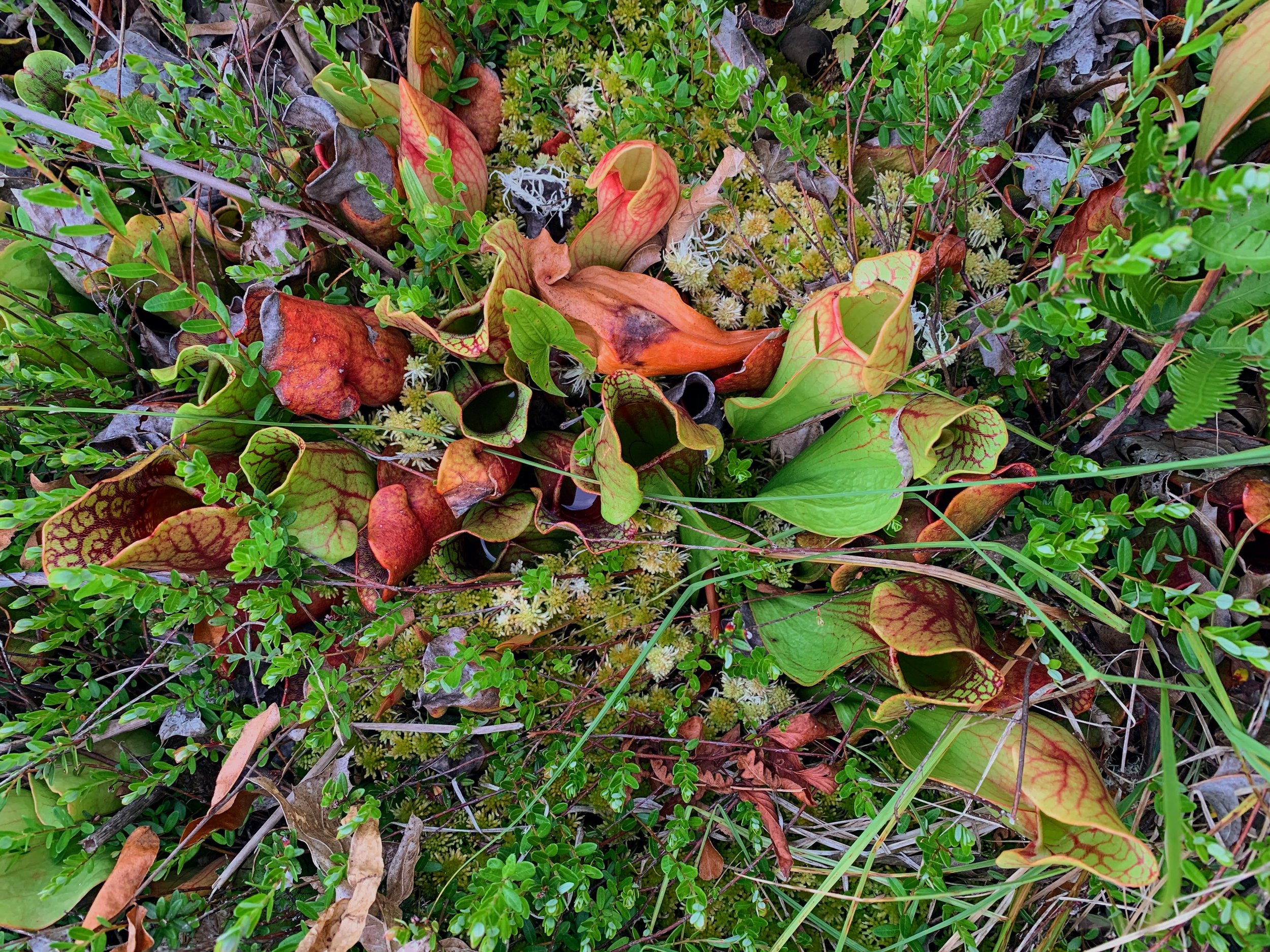
Further Reading & Bibliography
-
This is a very cute and helpful intro to peatlands and how they store carbon! A great place to start.
My only comment is that they only mention the bog's wetness to explain why things don't decompose in bogs. Bogs’ wetness is particularly anaerobic, highly acidic, and has additional chemicals from the sphagnum, which is why an object’s decomposition in a bog is very different than, say, at the bottom of a lake.
February 2022 by Sabrina Imbler and Eden Weingart
-
nytimes.com/interactive/2022/05/05/headway/scotland-peatlands-climate-change.html
On non-Scottish folks buying up huge tracts of land for carbon offsets.
See also:
Reuters: Who owns Scotland?
Prospect: Who really owns Scotland?
and others.
-
-
If you haven't read Kimmerer, stop what you're doing and go find a copy. Her work integrating scientific and traditional ways of knowing is beloved for good reason.
I particularly love the audiobook version, narrated by Kimmerer herself. Her poetic attention and love for her subject matter, her patience and enthusiasm as a teacher, and her soft, motherly voice is a balm and an inspiration.
I particularly used the introduction and the chapter on shagnum, “The Red Sneaker” pp 111-120.
Oregon State University Press, 2003.
-
Struzik, a canadian science journalist, is extremely readable, informative, and delightful. Evocative nature writing that makes me want to visit every place he writes about.
I drew from every section of this book, but particularly the chapters on the Great Dismal Swamp, pp. 27-54, and Central Park, pp. 55-70, which is where he talks in more detail about the association of bogs and swamps with miasma and disease.
Island Press, 2021.
-
British writer Robert Macfarlane collects words and names—rich traditional vocabularies describing the details of the land and humans' lives with it.
“Once they [natural phenomena] go unnamed, they go to some degree unseen. Language deficit leads to attention deficit” (24). “Once a landscape goes undescribed and therefore unregarded, it becomes more vulnerable to unwise use or improper action” (27). “It is precisely what is invisible in the land that makes what is merely empty space to one person, a place to another” (quoting Yi Fu Tan, 29).
MacFarlane reminds us that “place-speech serves literally to en-chant the land—to sing it back into being, and to sing one’s being back into it.” (22).
In chapter 2, he tells the story of an island community in Scotland that came together to protect its local bog from destruction because they had a relationship with their place, pp 15-36. He shares a glossary of words from Gaelic, English, and Welsh relating to bogs on pp.37-54. These words are indigenous to their places, emerging from culture-on-land, reminding us yet again that nature and culture do not need to be considered two poles at odds from one another, as they are in modernity.
Penguin Random House UK, 2015.
-
This book is extremely wide ranging and is the sequel to his book 1491, on the Americas just before colonial contact. I highly recommend both books.
For this project I drew from pp. 51-151, on the Atlantic coast and “evil air”.
Mann describes the powerful role that ditching and dyking wetlands (obstructing the natural movement of water in order to make the land arable) had in the increase in malaria in SE England because of the enclosures in the 1600s, which provided new motivation to make wetlands productive and profitable.
The early British colonists not only brought malaria with them to America, they also created ideal conditions for malaria to explode, with the way they engineered the landscape for tobacco growing.
Mann’s accounts were the first that I came across connecting the dots of the "bad air" that bogs were widely considered to have and the way wetlands became hotbeds of malaria due to landscape engineering for crop production.
"Malaria" is Italian for "bad air," and both in England and english-speaking America bogs became deeply identified with sickness.
Vintage Books, 2012.
-
Go for the episode on bog butter, stay for the trove of Scottish folk tales, mythical beings (some boggy!), traditions and history.
I learned a great deal from this podcast, and it brought my son and I a lot of joy when I was missing our former home.
-
Some of Annie Proulx’s research in this book seemed incomplete and contradicted things I had learned elsewhere, and I found her style abrupt and disjointed. But, I really appreciated her deep research into the history of the destruction of the fens in SE England, and I learned quite a bit about bog bodies in this book.
Scribner, 2022.
-
The indispensable field guide, with ethnobotanical notes.
Lone Pine Publishing, 1994. 2014.
-
Bruno Latour's lifelong project was to interrogate and disrupt the nature/culture divide that is the foundation of modernity. The depth of this conceptual divide is important for grasping the extractive and descructive orientation western civilization has toward the web of life. Latour's work has been fundamental to my thinking about this divide, and also because of his understanding of the importance of art-making for serious intellectual inquiry. See also his book We Were Never Modern and Reassembling the Social.
Translation by Catherine Porter, Polity Press, 2017.
-
Check out their "Strategy for Responsible Peatland Management" and online journal "Mires and Peat."
Harvesting peat is still big business.
-
-
Their website is extremely helpful as a field guide and for ethnobotany.
-
Seattle Audobon Society, 1997.
Out of print, extremely helpful. I accessed a copy at the University of Washington library.
-
